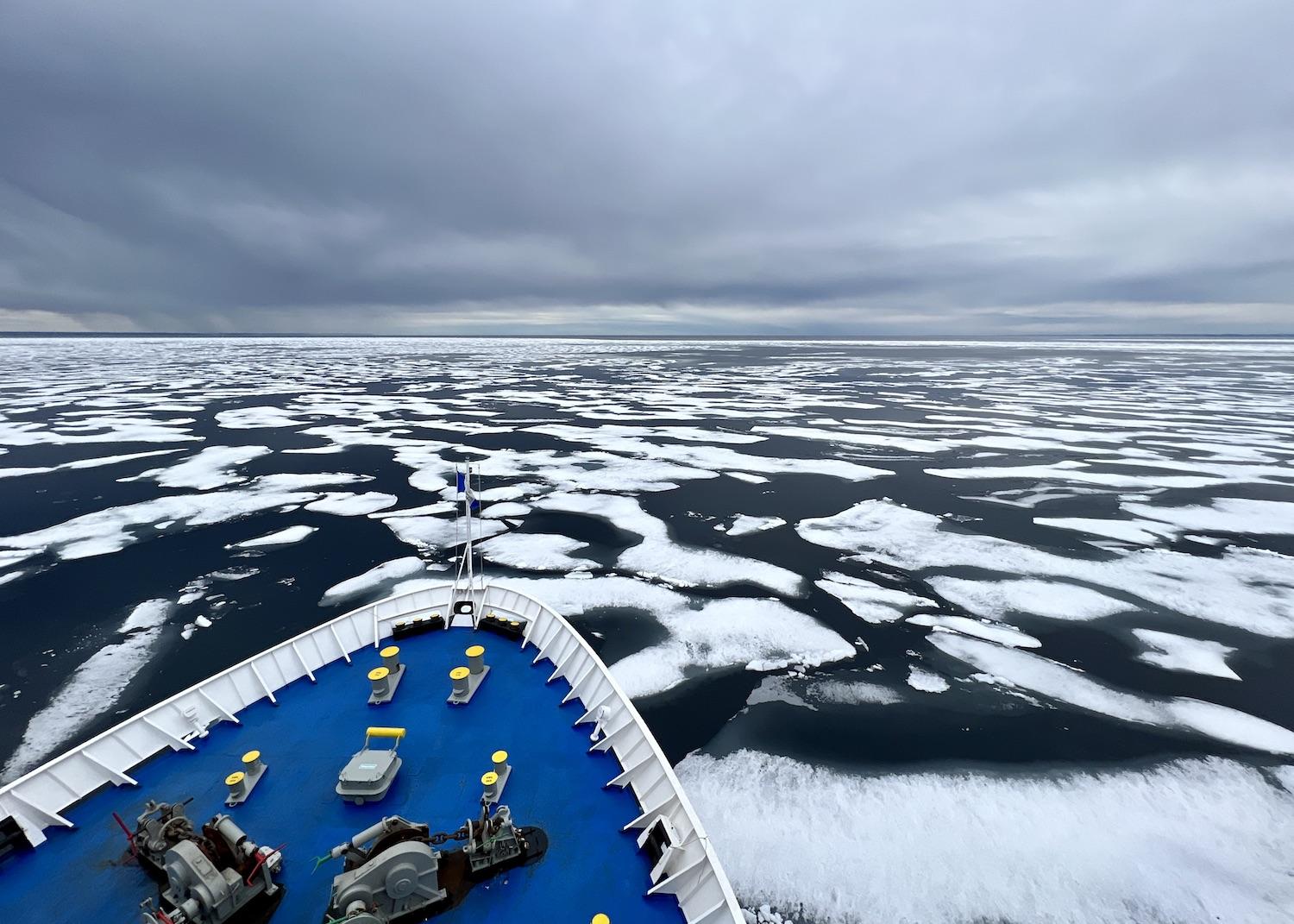
In August 2023, the Ocean Endeavour pushed its way through a challenging patch of sea ice between Pond Inlet and Resolute in Nunavut/Jennifer Bain
As the Ocean Endeavour pushed cautiously through a challenging patch of sea ice on route to clearing customs in Resolute, a couple of harp seals frolicked in the water of Lancaster Sound just off the ship’s bow. Their heads popped straight up so they could playfully stare us down for a few seconds before disappearing briefly and then bobbing to the surface in a never-ending loop.
It wasn’t the human welcome to Nunavut that we were expecting from the Inuit community, but it was a fitting greeting to the proposed Tallurutiup Imanga National Marine Conservation Area, the “ecological engine” for the Eastern Arctic.
And it was much easier to find the seals than the lone polar bear that had been spotted way off the port side about an hour earlier. We had already been treated to the marvel of two bears swimming in Greenland and even rare bowhead whales, but this first bear in Canadian waters proved tough for us to see.
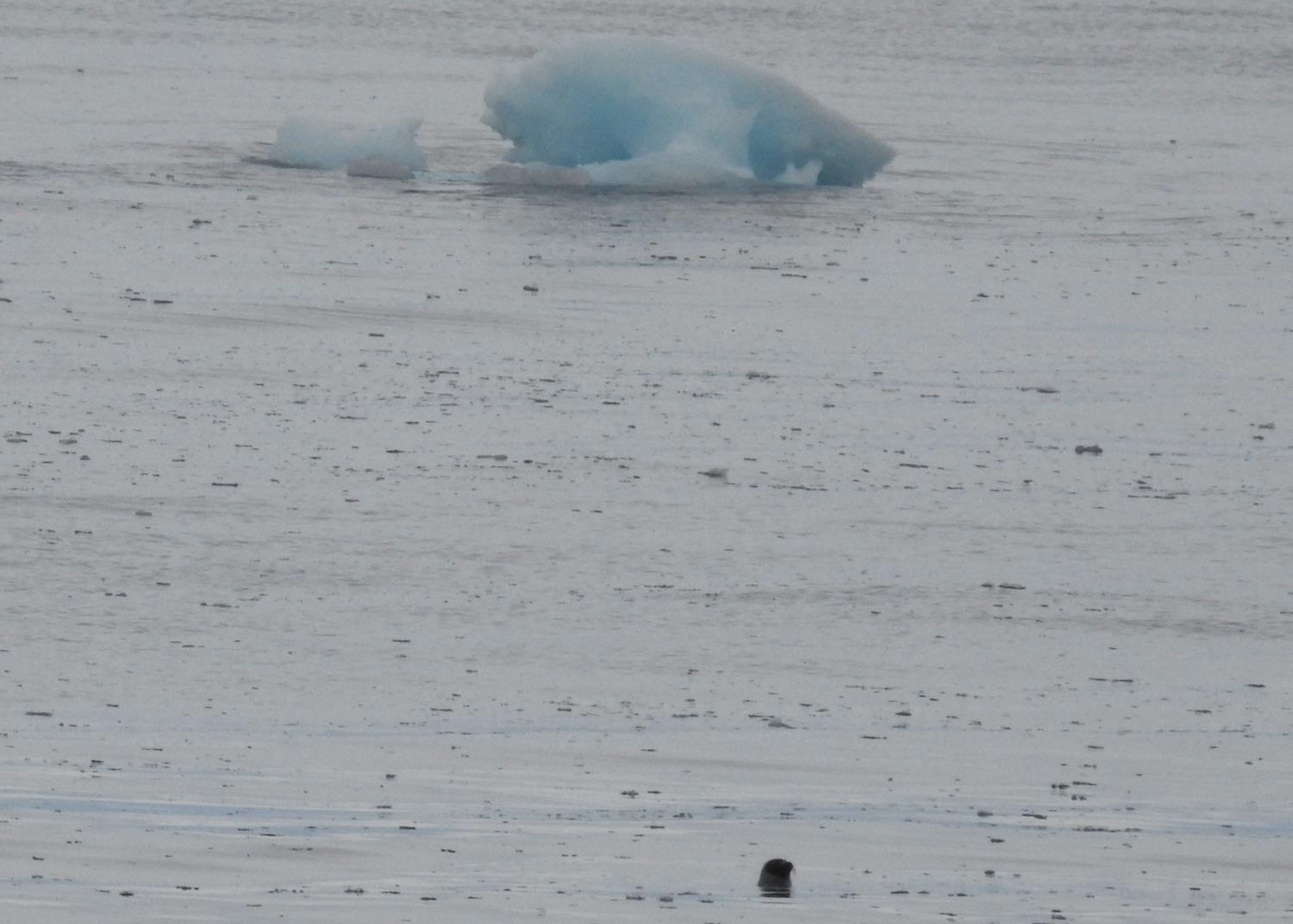
Seals frolicked in the ocean in front of the ship as we made our way through the proposed Tallurutiup Imanga National Marine Conservation Area/Jennifer Bain
The expedition team made a valiant attempt to help everyone find it, though.
“You’ll see a more minor crack that goes directly up the landscape and further to the left of that there’s a more major one that totally splits it,” assistant expedition leader Daniel Freeze told me on deck. “So from there we’re going to stay on the land and go over to the left, following the little dots of snow until you get to that thicker line that you can actually probably see just with your naked eye right there.
“Okay, so from the thicker line of snow, stay on the land and go over to the left and see it’s quite a small faint white dot. From that dot keep going left and the hillside dips a little bit. Actually, it’s changed even more now so if we keep going left from there you can see some snow along the edge of the land which you might actually be able to see right there — just right along the edge of the water. And the bear’s basically right in front of that right now.”
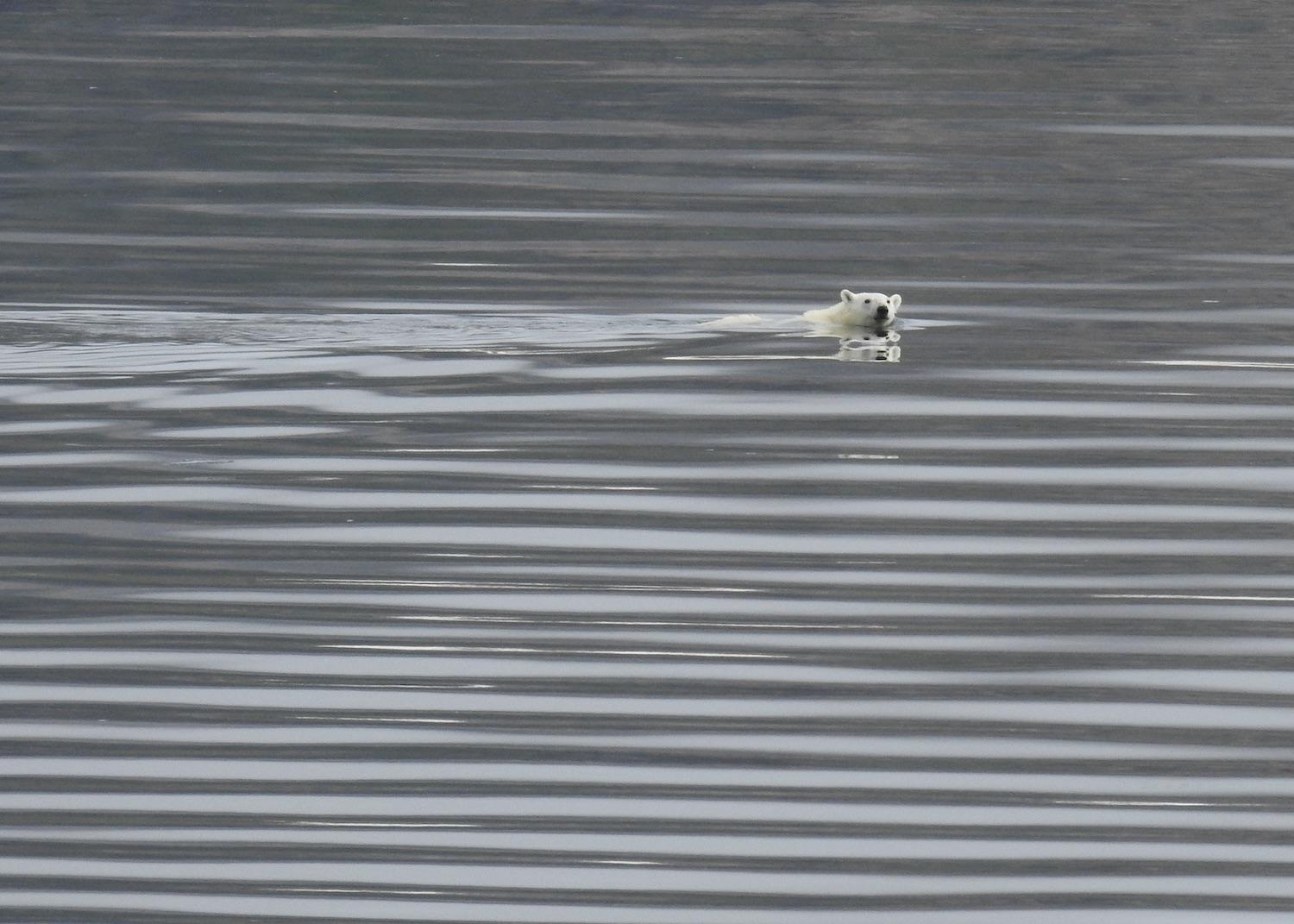
I couldn't spot the polar bear in Canadian waters, but did capture a photo of this one swimming in the ocean west of Greenland/Jennifer Bain
Forget the glossy wildlife photos in the brochures. The first thing you learn about expedition cruising is that marine mammals keep their distance and while the ship will stop or slow down, it won’t give chase or get too close. Spotting scopes, binoculars and zoom lenses are your friends.
Actually, the first thing you learn about expedition cruising is that Mother Nature will mess with the itinerary. I joined Adventure Canada two summers in a row for the 12-day High Arctic Explorer route that was in theory between Kangerlussuaq, Greenland and Resolute with four days exploring the marine conservation area, plus three more to visit adjacent spots on land. The Greenland portion of both trips had delays but no real hitches. The Canadian sections were, to put it gently, a challenge.
Last year, we made it to Pond Inlet for a community welcome and a hint of belugas, and then to Croker Bay for a glacier and polar bear family before being forced to hightail it back to Greenland. That was because Resolute, our planned departure point, was iced in, a northern fuel shortage meant our charter flight couldn’t refuel in an alternate town, and there was a significant storm approaching.
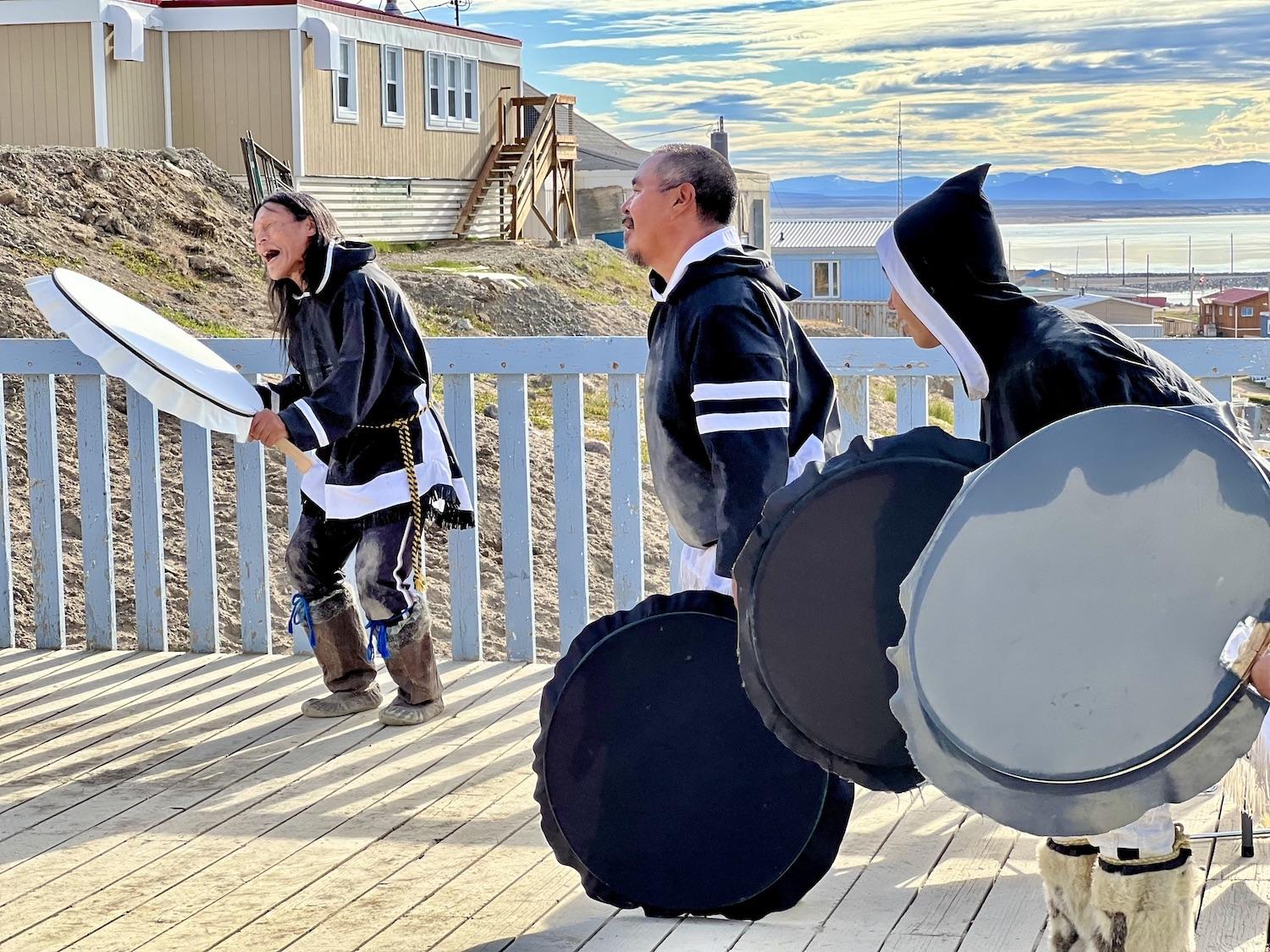
In 2022, the hamlet of Pond Inlet welcomed guests on Adventure Canada's Ocean Endeavour to Nunavut with a rousing arts showcase/Jennifer Bain
This year, both Pond Inlet and Resolute were iced in, so we killed time in Greenland for several days. “Ice is dynamic,” expedition leader John Blyth had told us. “It does what it wants to do.”
The gamble paid off, much to the delight of Captain Hervé Parage. The ice-strengthened Ocean Endeavour got through to Resolute to clear customs and then quickly backtracked overnight to Beechey Island Sites National Historic Site, the chilling spot where three men from Sir John Franklin’s doomed Northwest Passage expedition are buried. We made the most of our much-abbreviated time in Canada before circling back to Resolute for the flight south to Ottawa.
“People often talk about the transformative power of nature,” Blyth said as we gathered on the ship that final night. “Yes, this is true, but I really believe in the transformative power of adventure, and part of real adventure is when you leap out into the unknown. And I think many of you can really get a sense of what that feels like now, because I know in our normal lives, things are fairly predictable. We live our lives through routine. We tend to go towards the predictable, towards the known. But it’s not often that we truly are in these situations of unknown.”
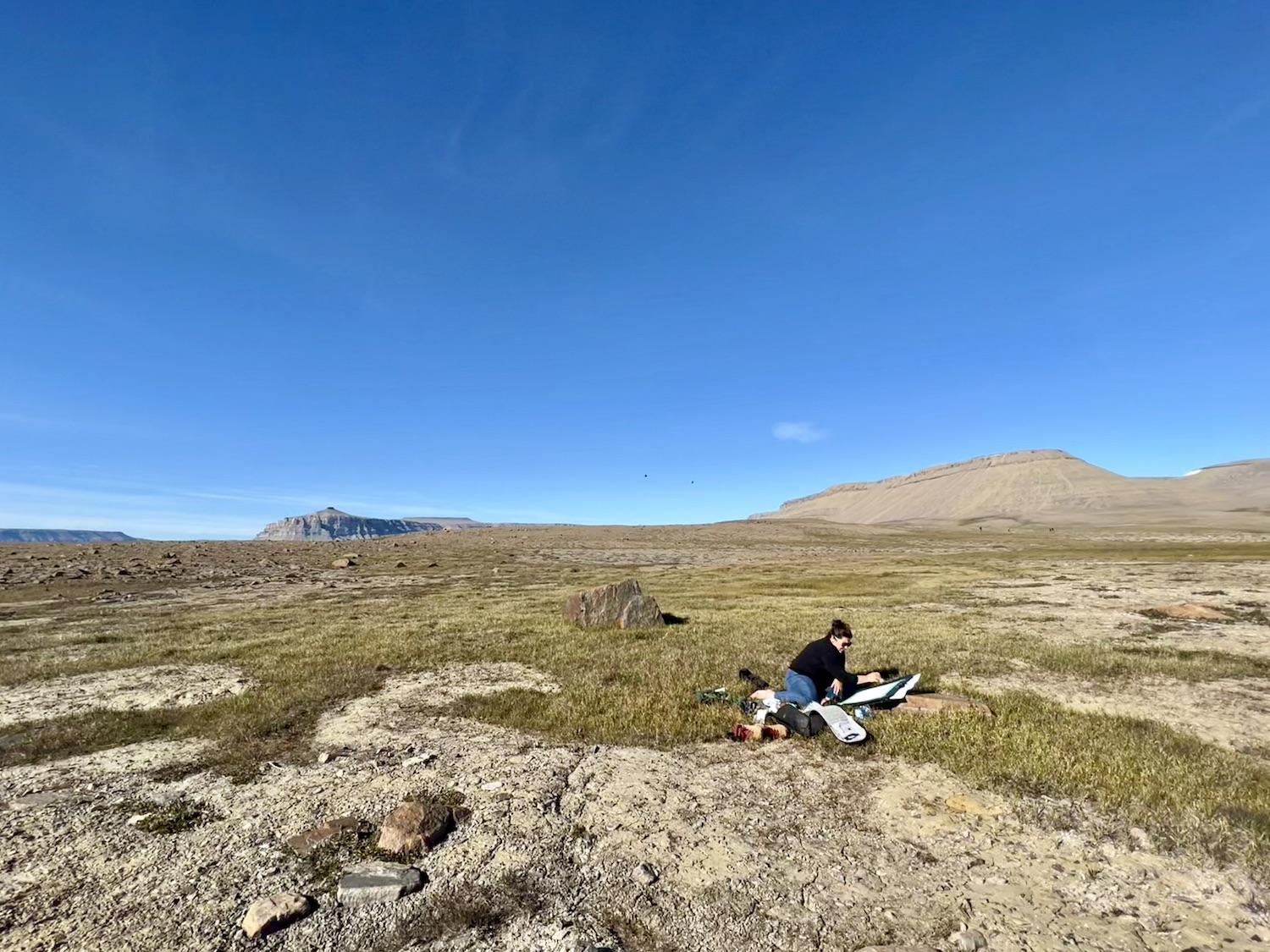
Inuk artist Niap (Nancy) Saunders, part of Adventure Canada's expedition team in 2022, used her time in Croker Bay to start a painting/Jennifer Bain
I’m drawn to remote places and had been eager to safely explore Tallurutiup Imanga (Lancaster Sound), a natural and cultural seascape that’s home to vibrant Inuit communities and majestic fjords and glaciers. It provides essential habitat for up to 75 per cent of the global population of narwhal, 20 per cent of the Canadian beluga population, and the largest subpopulation of polar bears in Canada. It’s a breeding and foraging habitat for millions of migratory seabirds like Thick-billed Murres, Northern Fulmars, Dovekies and Black-legged Kittiwakes.
Pronounced “tal-loo-roo-tee-oop ee-man-ga,” this part of northeastern Nunavut is considered one of the most significant ecological areas in the world.
Since the Canadian Arctic is frozen for most of the year, only a few well-adapted species remain here year-round. But the waters of the eastern entrance to Tallurutiup Imanga remain open most of the year and this “ecological engine” for much of the Eastern Arctic briefly explodes with migrating species each spring and summer.
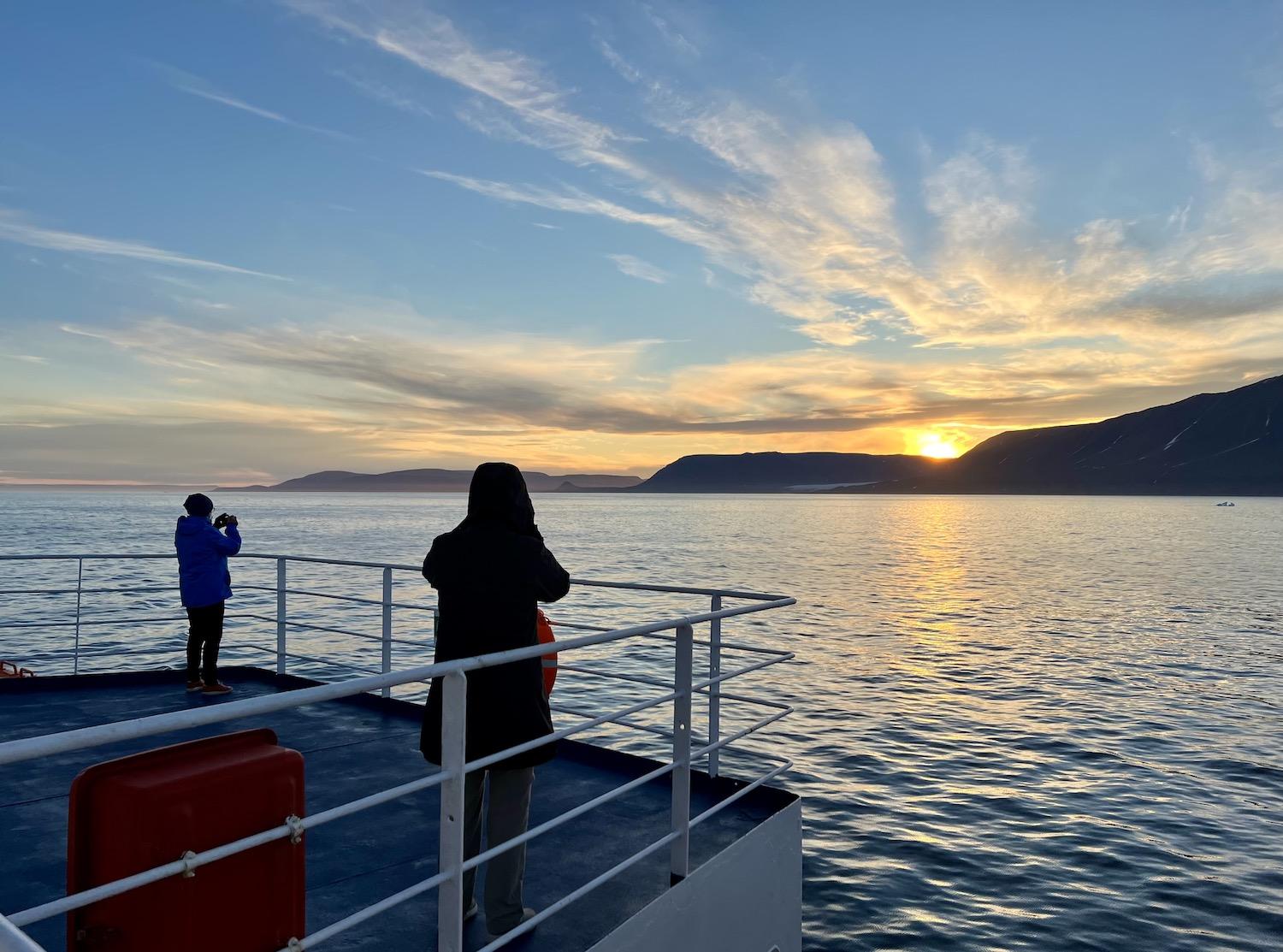
The sun shines for 24 hours a day in the Lancaster Sound area for most of the summer, meaning there is no sunset/Jennifer Bain
We learned about polynyas, large open water areas surrounded by sea ice that allow early productivity and attract marine birds and mammals. We heard how wind and current-driven upwelling bring nutrients to the surface, leading to high productivity along the floe edges of polynyas and during the open water season. Currents at the mouth of Tallurutiup Imanga move nutrients in all directions, nourishing the entire region.
The area's rich human history can be traced back to the Dorset (500 BC–1500 AD) and Thule (about 1000 AD until about 1500 AD) cultures. Oral history then describes the two-way movement of Inuit from one ocean to another between Canada and Greenland long before these countries were created. The Inuit homeland now stretches across Greenland, Canada, Alaska and Russia. Four regions make up Inuit Nunangat — the Inuvialuit Settlement Region of northern Northwest Territories, Nunavik in northern Quebec, Nunatsiavut in northern Labrador, and all of Nunavut.
The ocean remains a forest to the Inuit, and the proposed national marine conservation area (NMCA) will protect their harvesting rights.

A 2022 visit to Croker Bay included explorations near a tidewater glacier where icebergs, growlers and bergy bits came close to shore/Jennifer Bain
The idea to protect Lancaster Sound dates back to the late 1970s and took hold in the 1980s, but plans were set aside until Nunavut was created on April 1, 1999 through Canada’s largest land claim when it separated from the Northwest Territories. About 85 per cent of the territory's nearly 40,000 people are Inuit who live in 25 communities across three time zones. There are no roads connecting the communities and so people get around by boats, snowmobiles, dog sled and planes.
As Arctic oil and gas exploration increased, and rising sea levels and thinning sea ice caused by climate change opened up the High Arctic to more international shipping traffic, work on a vast protected zone began in earnest in 2009. Ten years later, the Canadian government and the Qikiqtani Inuit Association signed the Inuit Impact and Benefit Agreement required to turn the area into a NMCA and promised to begin to operationalize the area and draft an interim management plan. The agreement confirmed a moratorium on future offshore oil and gas exploration and developments, and supports Inuit stewardship of a protected area that’s twice the size of Nova Scotia.
“Rising temperatures and melting sea ice are shrinking habitats and putting vulnerable sea life under pressure,” Catherine McKenna, Minister of Environment and Climate Change and Minister responsible for Parks Canada, said during the 2019 announcement. “Inuit, who for millennia relied on these species for food, clothing and shelter, have found their livelihoods endangered and their futures at risk.” Protecting Tallurutiup Imanga would create a buffer against the threats of climate change, and protect against the stressors of human encroachment.
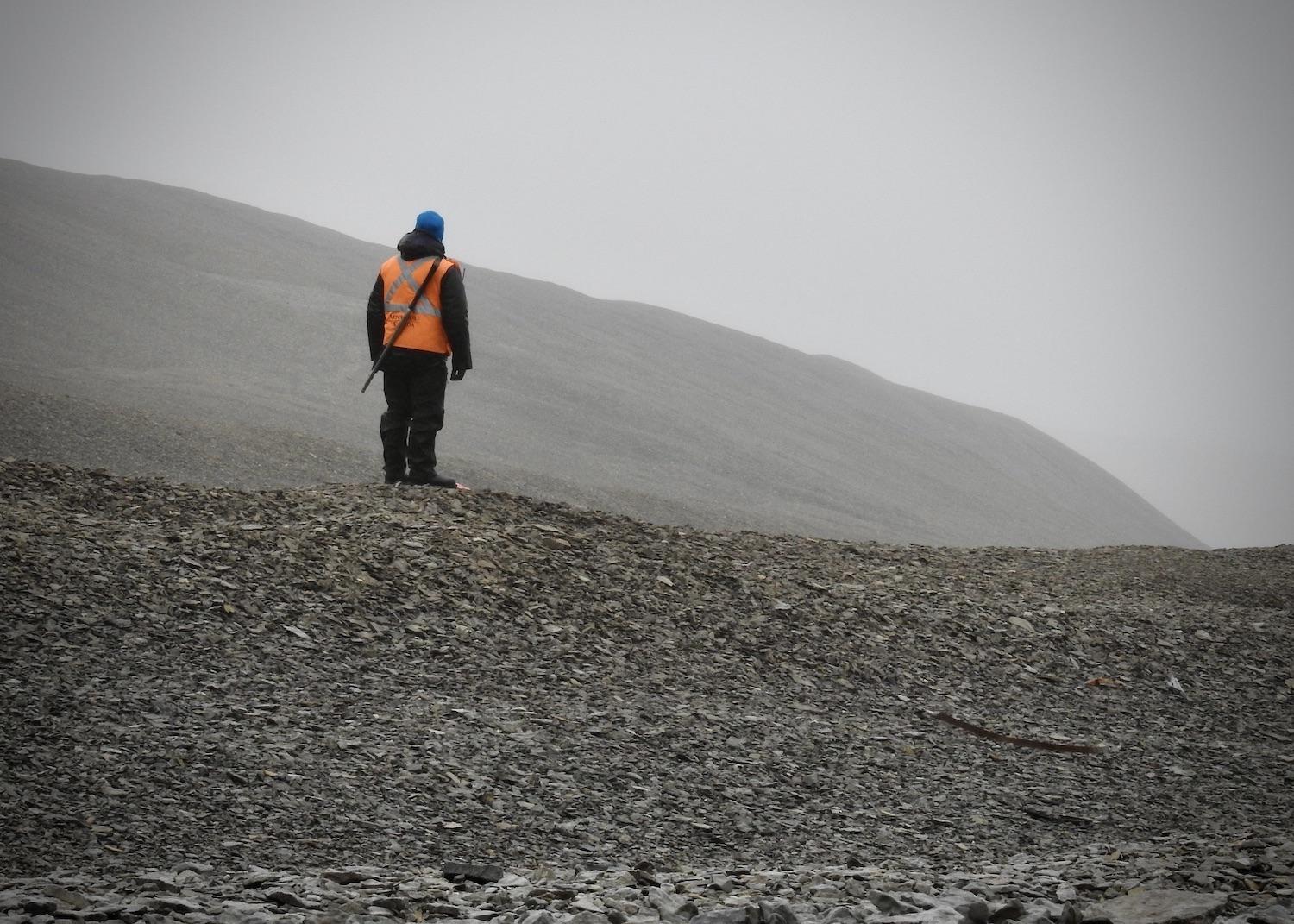
One of Adventure Canada's bear guards stands watch while guests explore Beechey Island Sites National Historic Site in Nunavut/Jennifer Bain
Not much progress has been announced since then, likely due to the global pandemic. But guided by Inuit Qauijimajatuqangit (traditional knowledge), the government will eventually take steps to formally protect the area under the Canada National Marine Conservation Areas Act.
NMCAs are multi-use marine areas containing zones of high protection. Commercial and recreational fishing, marine transportation, recreational activities and tourism may continue if managed in an ecologically sustainable manner. Ocean dumping, undersea mining and exploration, and development of oil and gas resources are banned.
About 3,600 people — primarily Inuit — live in the Tallurutiup Imanga region in the communities of Pond Inlet, Arctic Bay, Resolute Bay, Grise Fiord and Clyde River.
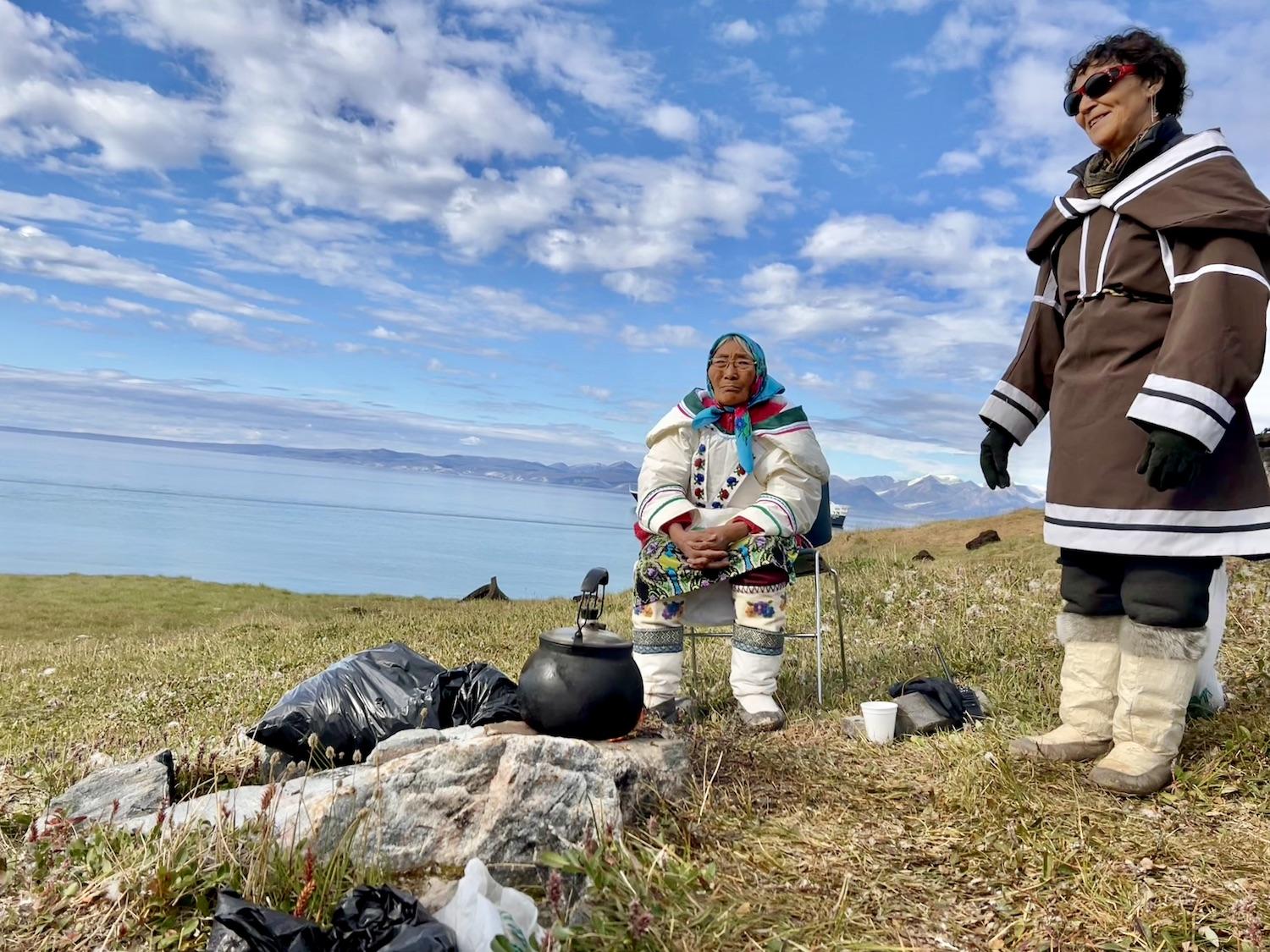
In 2022, the hamlet of Pond Inlet welcomed Adventure Canada guests to their community adjacent to the proposed Tallurutiup National Marine Conservation Area/Jennifer Bain
The region draws tourists who are eager to see wildlife and learn about Inuit culture and history. Up to two dozen small-ship expeditions typically arrive each year between July and October. Adventure Canada, a family-owned business with deep ties to the north, hires Inuit expedition team members as cultural educators who may double as bear monitors and Zodiac drivers. Many communities charge cruise ships $75 (about $57 USD) a head for guests to go ashore for tours and performances.
That was the case when I made it to Pond Inlet (also known as Mittimatalik) last year. The vibrant hamlet overlooks Eclipse Sound and the mountains of Bylot Island, a sanctuary for millions of nesting birds, and often draws large pods of narwhal, the “unicorns of the sea.”
Guides led us on a walking tour of the community before we gathered outside the Nattinnak Centre to see the renowned Tununiq Arsarniit Theatre Group perform Inuit games, throat singing and drum dancing. At one point, locals excitedly began pointing to sea and shots rang out. Belugas had been spotted and the hunt was on.
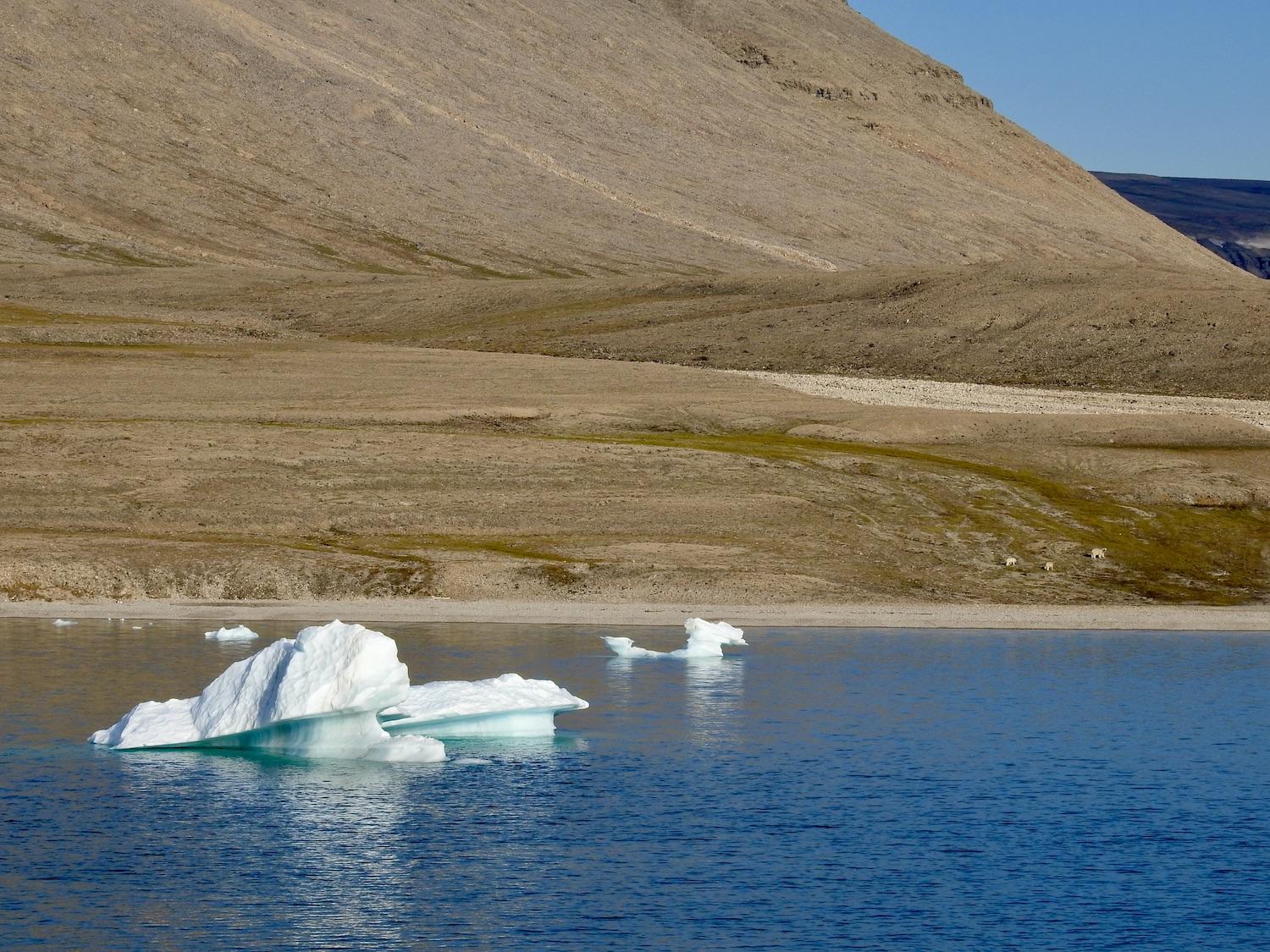
Without zooming in too close, this is a realistic view of the three polar bears that we saw in 2022 at Croker Bay hours after we had walked that same land/Jennifer Bain
The next afternoon we stretched our legs in Croker Bay just off Devon Island, the largest uninhabited island in the world.
The bear guards set up a perimeter and we were free to wander within it, chatting with the expedition team's artists, botanists, geologists, historians and ornithologists at various informal “stations” spread out on the land. We did Zodiac tours of the South Croker Bay tidewater glacier and then lingered nearby over dinner.
As we started to leave the area, someone spotted a mother polar bear and two cubs walking the very shoreline where we had spent the afternoon. Those bears were blessedly easy to spot as they meandered across the barren landscape, indifferent to our existence.
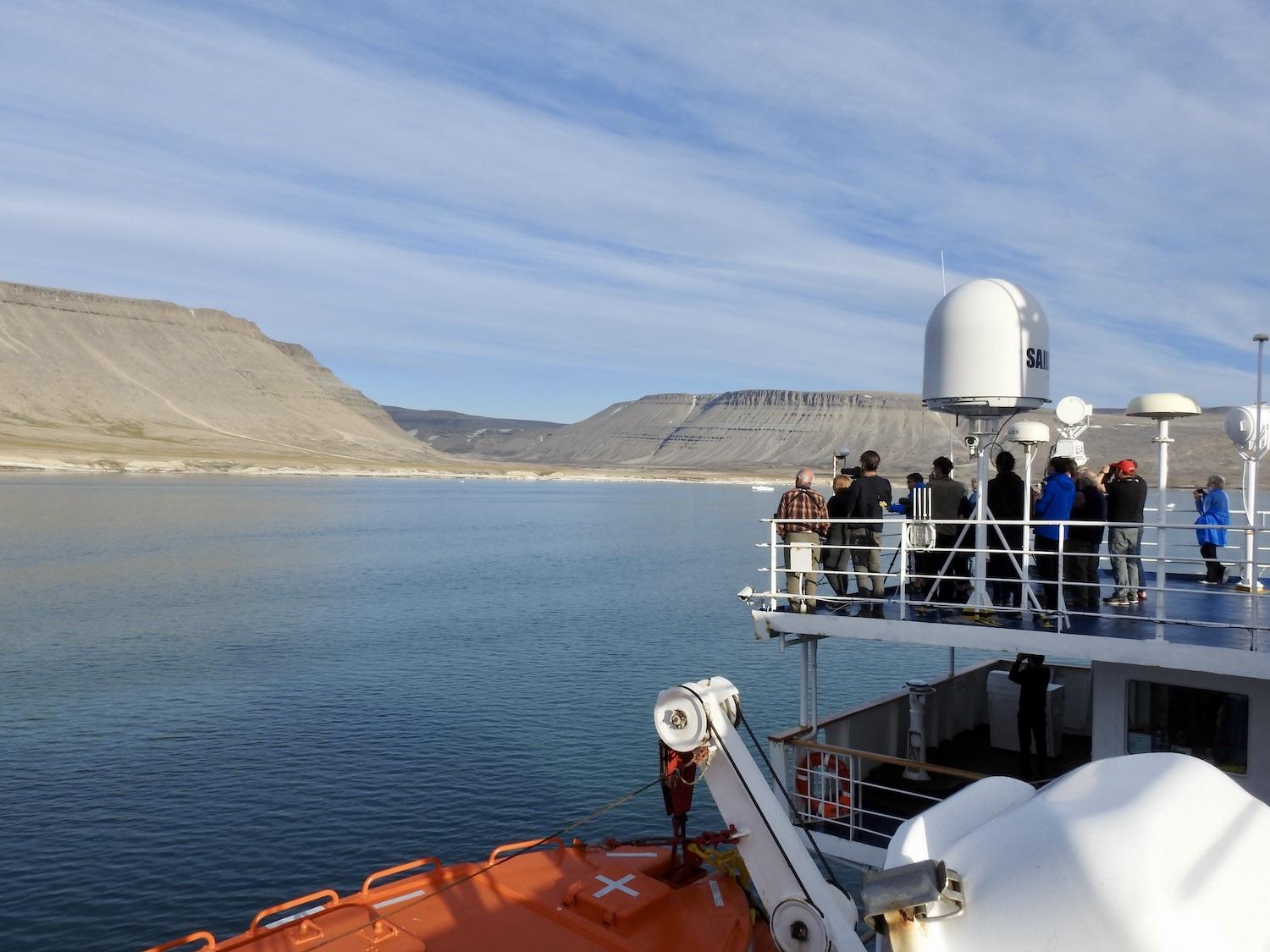
Adventure Canada guests gather on deck to see polar bears walking on shore at Croker Bay in 2022/Jennifer Bain
This year, our trip ended as planned in Resolute, also known as Resolute Bay or Qausuittuq in Inuktitut, which means “place with no dawn” because of long winter nights.
It's the second most northerly community in Nunavut and has 24 hours of sunshine from April to August. Named after the British ship HMS Resolute which became trapped in ice and abandoned here in 1850 while searching for the lost Franklin expedition and the Northwest Passage, this is a place where the Canadian government forced Inuit families from northern Quebec to relocate to when it was trying to assert strategic sovereignty in the High Arctic during the Cold War.
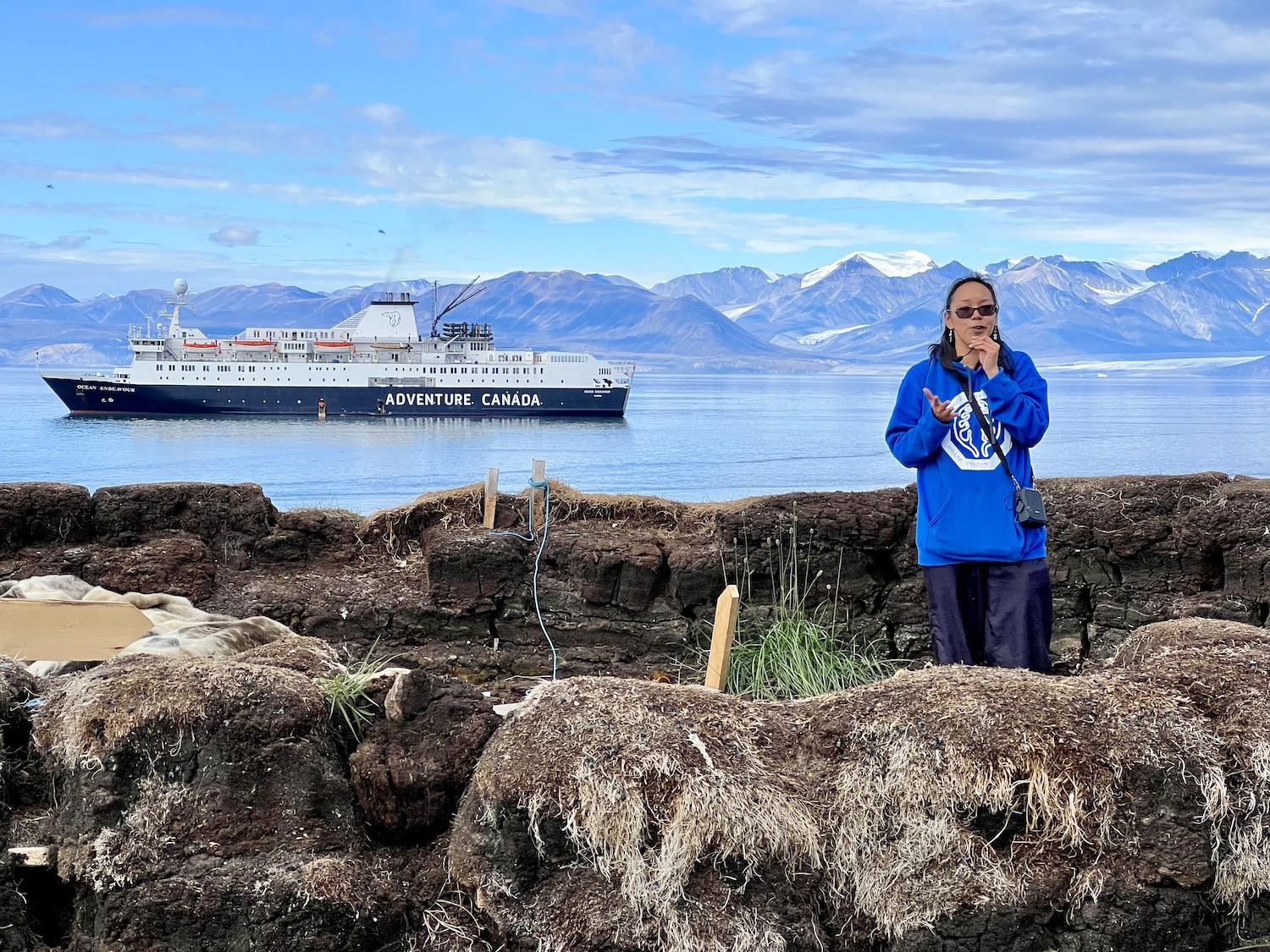
Pond Inlet tour guide Georgina Pewatooalook shows the remains of a sod house in 2022 while the Ocean Endeavour waits in the proposed Tallurutiup Imanga National Marine Conservation Area in front of Bylot Island/Jennifer Bain
Devon Manik, who sailed on the Ocean Endeavour in 2019 for an expedition called Students on Ice, came aboard with his grandmother, mother and brother to welcome us to the community of barely 200 people. The 22-year-old "adventurist" owns a dog sled team and is a community hunter, Canadian Ranger and a Guardian for the marine protected area. The Parks Canada Indigenous Guardians program supports Indigenous land management and stewardship in their territories based on a cultural responsibility for the land.
Manik regaled us with stories of harvesting polar bear, muskox, seals, beluga and caribou to share with Elders and neighbors, and stressed that the Inuit only take what they need and should not be blamed for a decline in wildlife.
When asked how we could support the north when we return home, he had an easy answer: "Stop climate change."
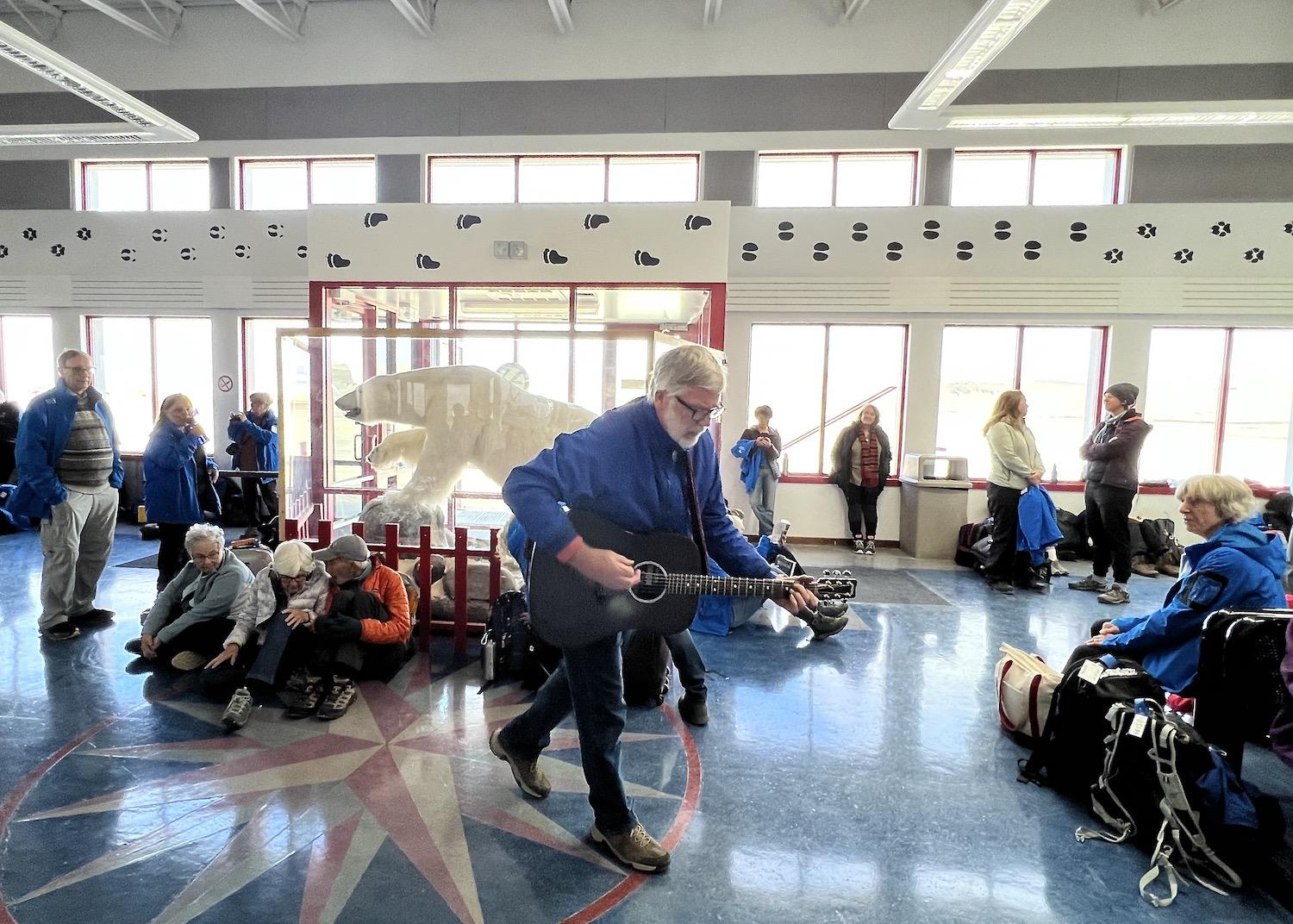
At Resolute Bay Airport before a charter flight, Adventure Canada High Arctic Explorer host James (J.R.) Raffan plays for guests in front of a taxidermied polar bear/Jennifer Bain


